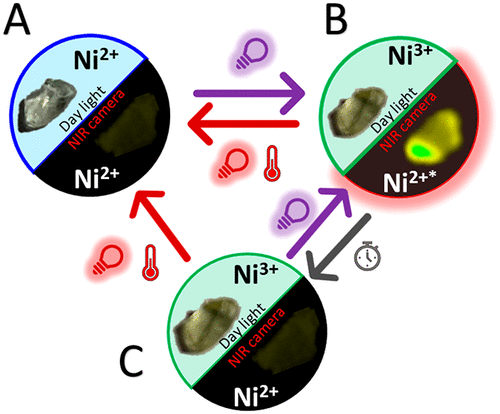Ask for a reprint
email :
* Give your email
2021
ACL
|
V.Castaing, L.Giordano, C.Richard, D.Gourier, M.Allix, B.Viana, 'Photochromism and Persistent Luminescence in Ni-Doped ZnGa2O4 Transparent Glass-Ceramics: Toward Optical Memory Applications', J. Phys. Chem. C 125 10110-10120 (2021) doi:10.1021/acs.jpcc.1c01900
Persistent luminescence and photochromism are two fascinating optical properties that involve charge trapping via defects and their release due to an external stimulation. In both processes, it is possible to define “1” (or “on”) and “0” (or “off”) optical states. Consequently, materials with one of these phenomena find major interest in view of designing smart, anticounterfeiting, and optical information storage devices. Combining both processes within a single material can lead to a new generation of information storage phosphors, in which it may be possible to obtain three different optical states by playing on the external stimulations applied on the material. For that purpose, the elaboration of nickel-doped ZnGa2O4 spinel transparent nano-glass-ceramics is presented in this work. The short-wave infrared (SWIR) emission, a broad band located at ca. 1275 nm, arises from Ni2+ cations located in gallium octahedral sites. SWIR persistent luminescence, arising from the same doping ion transition, can also be monitored after UV charging. Interestingly, UV irradiation not only leads to persistent luminescence charging but also to a reversible photochromism effect. By means of a complete optical characterization study combined with electron paramagnetic resonance measurements, the origins of both the persistent luminescence emission and the photochromism are explored. Finally, a discussion on the advantages of such a material combining both persistent luminescence and photochromism properties, leading to three possible optical states of the material, is dressed in view of possible optical memory systems.
|

|